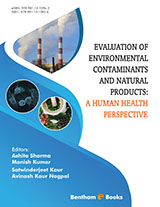Abstract
Ascidians are known to accumulate extremely high levels of vanadium in their blood cells. The concentration of vanadium in seawater is 35 nM, while the concentration of vanadium reaches 350 mM in blood cells, which corresponds to 107 times that of seawater. Ascidians can be regarded as a natural ecosystem that harbors vanadium-related symbiotic bacteria and serves as a useful bacterial resource. Since the 1990s, vanadium-accumulating or -reducing bacteria have been isolated from vanadium-rich ascidians. Recent functional screening and comprehensive molecular studies also identified symbiotic bacteria in the branchial sac and the intestine. These bacteria could contribute to the high accumulation of vanadium by ascidians. In this chapter, the authors overview the vanadium accumulation and reduction in ascidians, review the studies on the isolation and functional analyses of vanadium-accumulating or -reducing bacteria, and provide perspectives on utilization of these bacteria for bioremediation of heavy metals.
Keywords: Accumulation, Marine invertebrate, Metal, Reduction, Symbiotic bacteria, Vanadium.








